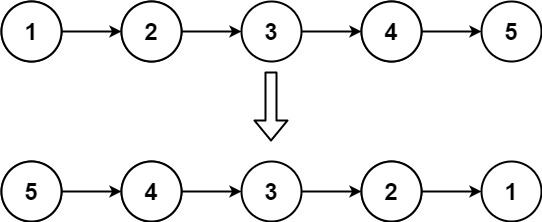题目描述
给你单链表的头节点 head ,请你反转链表,并返回反转后的链表。
示例:
递归思路
递归函数的功能:
- 传入一个结点head,让结点的下一个结点指向该结点;
- 让head结点指向Null
因为是递归, 所以步骤是:
- 5->4->null
- 4->3->null
- …
- 2->1->null
返回值为新的head
终止条件
head == null || head.next == null
递归代码
class Solution {public ListNode reverseList(ListNode head) {if (head == null || head.next == null) {return head;}ListNode newHead = reverseList(head.next);head.next.next = head;head.next = null;return newHead;}}
非递归思路
双指针迭代
- 用pre指向null, head指向head;
- 循环,让head指向pre, 并让pre和head都往后指一个结点;
- 停止循环时完成了所有反转,返回head即可。
双指针代码
class Solution {public ListNode reverseList(ListNode head) {if (head == null || head.next == null) {return head;}ListNode pre = null;while (head != null) {ListNode nextNode = head.next;head.next = pre;pre = head;head = nextNode;}return pre;}}
非常重要的点
在循环开始时,head指向的结点和前一个结点之间是断开的,例如:
当head指向1时,null 和 1之间是断开的,null 1->2->3->4->5
当head指向2时,1和2之间是断开的,null<-1 2->3->4->5
那么当head指向5时,仍然需要再执行一次循环,因此判断条件不能是head.next != null 而是 head != null, 只有当head指向null时,5和4之间才连接起来,即完成了所有的反转。
但是此时head指向null,那么怎么返回5作为新的头结点呢?
我们的pre总是指向head的前一个结点,因此当head指向Null时,pre刚好指向5,即新的头结点,因此最后返回pre即可。
总结
该题采用迭代,比递归更好理解,因此推荐使用迭代。

